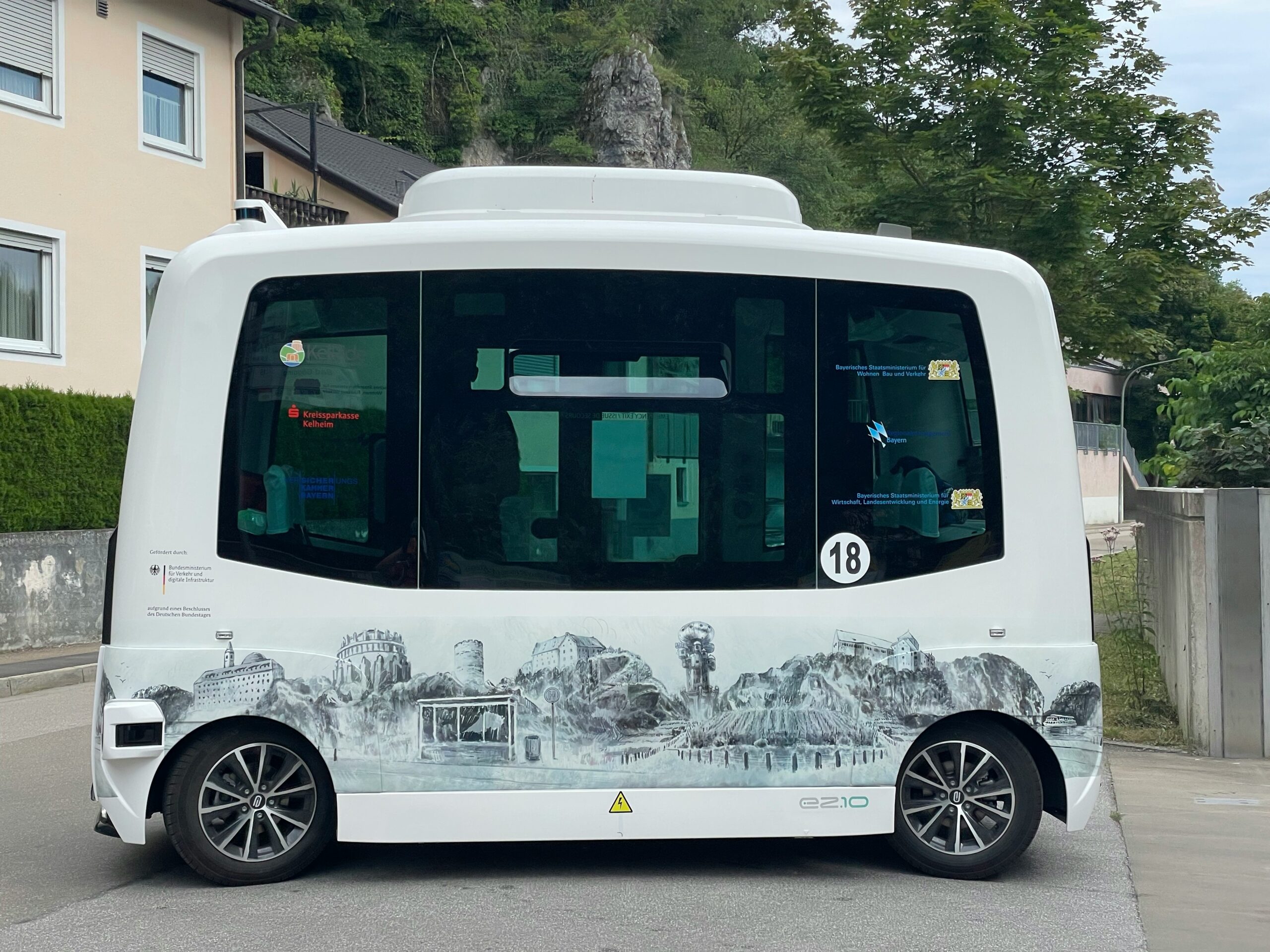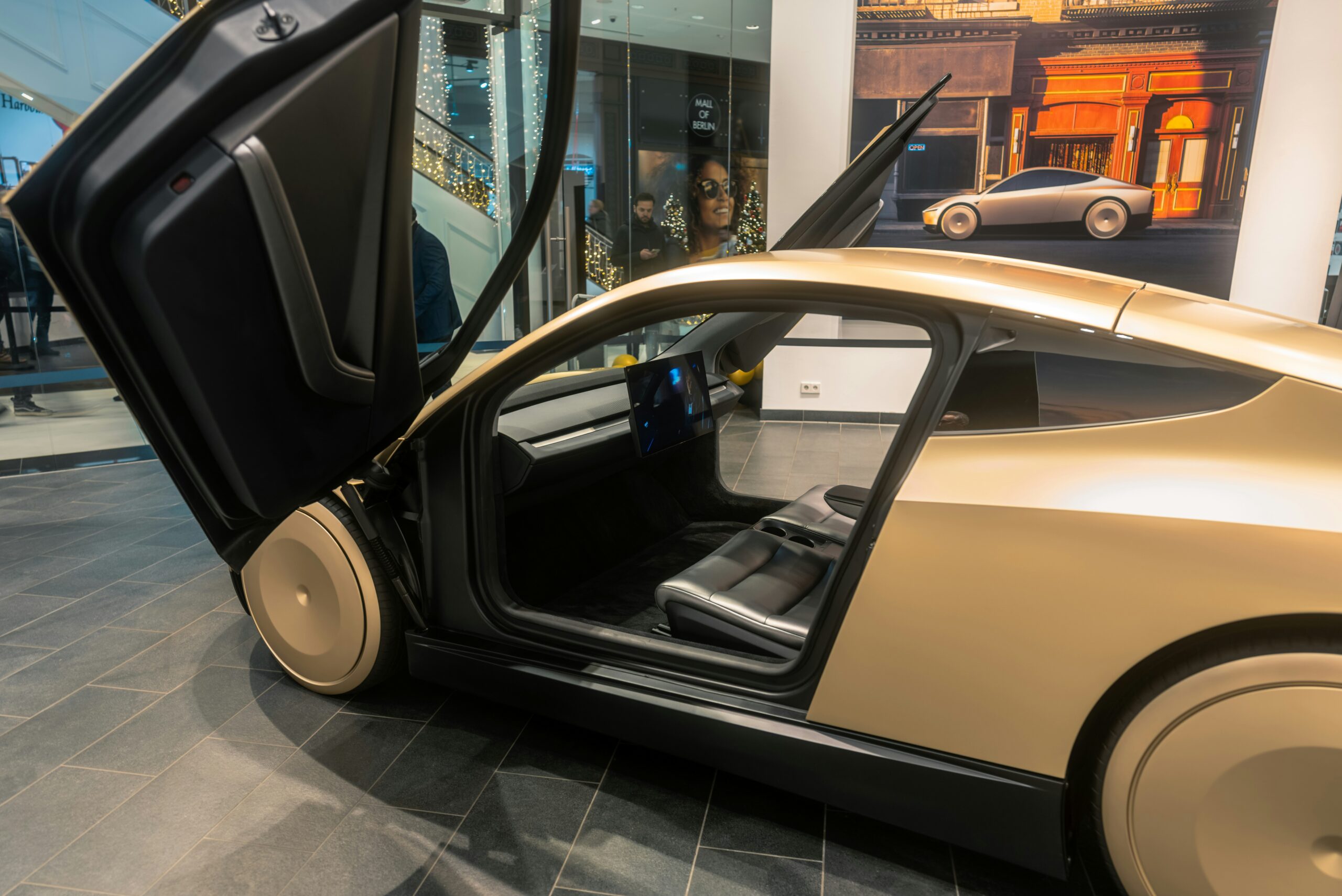As robotaxis emerge, are we building ‘faster horses’—tech-improved versions of the current car-centric paradigm—or are we on the brink of a positive transportation revolution?
Are we simply replacing human drivers with AI algorithms without fixing the flaws of a system that prioritises individual car ownership over sustainable and equitable alternatives? Disruptive technologies can revolutionise industries but risk failing to address systemic issues. In transportation, automating existing systems without tackling urban sprawl and car dependency will not create a sustainable or fair future.
From West to East, across the key global hubs of AV innovation—the US, Europe, and China—the ‘horse race’ (forgive the pun) in autonomous vehicles reveals starkly different approaches to shaping the future of transport. Let’s explore them.
The US: Car-Centric Culture Meets Robotaxi Ambitions
With its deeply ingrained car-centric culture, the US provides a prime example of this potential pitfall. Decades of prioritising personal vehicles over robust public transportation have resulted in sprawling suburbs, traffic congestion, and significant environmental damage.
It’s no surprise that robotaxis, promising a more convenient and potentially cheaper version of the familiar personal car, are finding fertile ground in America. However, recent developments, such as GM’s scaling back of its Cruise robotaxi operations after a tragic incident involving a pedestrian dragged under one of its vehicles and their pivot toward focusing on ADAS (albeit with the longer-term vision of personally owned AVs), raise valid questions about the viability of this model.
The Challenges of Scaling Robotaxi Operations
The allure of robotaxis stems from the Silicon Valley narrative of disruption. With its app-based ride-hailing model, Uber’s rise fuelled the belief that AVs could one day revolutionise transportation by eliminating the high cost of human drivers. This vision, however, may have been overly simplistic. The reality is that launching and sustaining a successful robotaxi service demands immense complexity and expense.

Uber ride-hiring platform
The hefty costs span cutting-edge R&D, state-of-the-art vehicle design with advanced sensors, powerful computing systems, stringent safety measures, and the development and upkeep of critical infrastructure. Compounding these challenges is the unclear business model for robotaxis, making it a game only companies with deep pockets can afford to play, with profitability still far on the horizon.
Who’s Leading the US Robotaxi Race?
With Cruise scaling back its robotaxi ambitions, Waymo has emerged as the dominant player in the US**, steadily expanding its fleet to roll out services in new American cities and having just announced it is moving overseas to Japan. Amazon-owned Zoox is still in its early stages, and Hyundai-owned Motional’s future remains uncertain. The timeline for Tesla’s disconcerting two-seater, no-steering wheel, no-pedals Cybercab is unclear (plus Tesla’s Autopilot is not self-driving, and FSD is a beta).
Europe: Regulating AVs with Public Transport in Mind
In Europe, the focus leans heavily on public-private collaboration, with a preference for fixed-route AV use cases, like on-demand public transport shuttles and automating long-haul freight transportation.

Autonomous driving bus in Germany | Photo by Bernd 📷 Dittrich on Unsplash
Even with safety drivers, obtaining testing permits for AVs remains a significant hurdle for European developers. This cautious approach, while understandable, slows the learning curve, as real-world driving scenarios and edge cases are crucial for refining AV algorithms. These challenges cannot be fully addressed through simulators and lab testing alone. Furthermore, smartphone-based ride-hailing (the source of robotaxi rides) is limited in Europe because of regulatory hurdles in many cities and countries. Uber’s better to ask forgiveness than permission strategy clearly has not worked and never will in Europe.
Leadership in AV Standards and Research
European values like safety, equity, and inclusivity are commendable. However, a tendency toward moral superiority—reflected in overly cautious regulations—and a fragmented approach among member states slow the adoption of AV commercial use cases.
Nevertheless, Europe plays a pivotal role in shaping the future of AVs through its leadership in safety, cybersecurity, and technical standardisation. These advancements are underpinned by the rigorous European type-approval process, which enforces a structured framework for vehicle development. This approach is becoming increasingly vital in the context of AVs and serves as a model for other regions. Furthermore, the European Commission’s Horizon Europe programme provides substantial investments in CCAM research.
Key Players in the European AV Market
Some European AV shuttle companies, such as the Swiss Bestmile (acquired by the German ZF/2getthere) and the French Navya, have faced setbacks. These challenges include low commercial speeds, early safety incidents, relying on onboard safety drivers, and the inability to secure strategic projects for scaling. However, these failures can largely be attributed to their roles as first movers in the market.
Nethertheless, Europe remains a leader in the AV shuttle space, with prominent players like ZF/2getthere, EasyMile (France), Oxa (UK), and Rebel (The Netherlands) driving continued innovation. Some of these AV shuttle companies cover passenger transport and logistics.
Autonomous long-haul trucking has also garnered significant interest from established OEMs and emerging startups. This technology promises to mitigate the industry’s chronic driver shortage and high maintenance costs, which is particularly crucial in a sector known for its thin profit margins. The Swedish Einride has emerged as one of the most interesting and fast-growing companies in this space.
Remarkably, Germany and France already allow Level 4 AVs to operate on public roads under specific conditions, and the UK has just followed suit by passing the Automated Vehicles Act, starting in 2026.
However, while Europe is actively testing and developing AV technologies, fully operational commercial robotaxi services are unavailable. One key reason may be that a door-to-door personal mobility solution at a competitive cost could eventually undermine train and bus ridership, and this is a red line in Europe. In response, Europe is likely to continue implementing regulatory measures to ensure that robotaxis are deployed in a manner that safeguards public transport systems, emphasising integration, equity, and environmental benefits over market disruption.
China: State-Led Innovation Driving Rapid AV Deployment
China leads the AV race in the number of vehicles being tested on public roads, with the city of Wuhan recently dubbed by the New York Times as “the world’s largest experiment in driverless cars”. China’s approach is heavily defined by state-driven initiatives and rapid deployment in major cities, with many well-funded companies competing fiercely to become the ‘top horse’.
The Role of Government Support in AV Growth
The major players include Baidu (Apollo Go), Pony AI and WeRide, all vying for market share and profitability while navigating some regulatory uncertainties. However, these uncertainties do not stifle innovation. Quite the opposite: the government actively supports these companies by designating dedicated zones in cities for on-road testing of robotaxis, facilitating large-scale trials.
Pony AI is also active in the robotruck sector, which remains its primary source of revenue, as well as in personally owned AVs. Meanwhile, WeRide is making strides in the AV shuttle market also outside China, and even competing in Europe—the home turf of leading players in this space. Interestingly, both companies were founded in Silicon Valley by former Baidu employees in 2016 and 2017, respectively.
Collaborations with Legacy Automakers
In China, the success of AV tech companies often hinges on their strategic collaborations with legacy automotive OEMs. For instance, Toyota is the biggest shareholder of Pony AI, supplying the cars for its robotaxi business, and WeRide is backed, among others, by the Renault-Nissan-Mitsubishi Alliance. These partnerships leverage the strengths of legacy automakers, such as their manufacturing capabilities and substantial financial resources.
The Global AV Landscape: Challenges and Opportunities
It remains to be seen whether what Zoox and Motional learn in Vegas will stay in Vegas. For now, this leaves Waymo as the sole frontrunner in the US.
The US robotaxi market appears to be consolidating following Cruise’s shutdown. Meanwhile, Zoox’s purpose-built robotaxi and Motional’s IONIQ 5 are steadily accumulating miles on public roads in Las Vegas. However, commercial services have yet to begin.
This stands in stark contrast to China, the global epicentre of robotaxis in terms of market penetration and absolute deployment numbers, where Apollo Go, Pony AI, and WeRide compete for market dominance.
China’s Competitive Edge in Robotaxi Deployment
Being a nascent market, all robotaxi companies are striving for profitability. Some, like Baidu, confidently project positive figures in certain markets as early as 2025, thanks to its 6th generation Apollo robotaxi, which cuts manufacturing costs by half compared to its predecessor.
Indeed, all robotaxi operators focus on optimising the per-vehicle operating margin—the difference between passenger fares and associated costs, including maintenance, R&D, and manufacturing. The race is defined by when this margin will turn positive. AV shareholders will scrutinise these figures closely, pushing for a clear path to profitability as proof that they have backed the ‘right horse’.
Geopolitical Tensions and Trade Restrictions
Geopolitical tensions and trade disputes will likely create significant barriers for Chinese AV companies seeking to expand into the US and Europe. This mirrors the current tariffs on affordable yet high-tech EV imports aimed at protecting traditional Western automotive industries.
In the US, concerns over data privacy and fears of Chinese tech companies spying make it unlikely that Chinese robotaxis, which could gather vast amounts of traveller data 24/7, will operate widely in American cities anytime soon. Adding to this dynamic, Elon Musk —who is set to lead the new so-called ‘Department of Government Efficiency’ in President-Elect Donald Trump’s administration— plans to advocate for new AV regulations, potentially creating an even less favourable environment for Chinese competitors. Even before announcing the Cybercab, Musk also revealed that Tesla aims to launch a robotaxi service by late 2025, allowing owners to rent out their vehicles, with testing currently underway in San Francisco. However, regulatory approval for such a scheme is anything but guaranteed.
Chinese AV Companies Target Emerging Markets
Meanwhile, Europe’s protectionist stance —favouring public transport and sustainable mobility, increasingly banning cars from city centres, and supporting the traditional taxi sector— and stringent regulatory scrutiny are likely to complicate entry for Chinese robotaxi firms further.
As a result, Chinese AV technology companies are focusing their expansion efforts on other potentially lucrative markets like the Middle East and Southeast Asia. These regions lack a local AV industry but demonstrate a strong appetite for future mobility technologies, offering lower entry barriers and more accessible opportunities for growth, including investment. For example, Pony AI has extended its autonomous driving business to South Korea, Saudi Arabia, and the UAE. Baidu recently took its first step abroad, securing the first-ever autonomous driving license in Hong Kong for its Apollo Go—albeit with a safety driver. Similarly, WeRide has been operating its AVs on public roads in the UAE since July 2023 and in Singapore since late 2023, both with safety drivers.
Waymo has just landed in Japan, a move that comes with its own set of challenges. One strategic goal is gathering mapping data and testing its robotaxi in an entirely new environment: left-hand driving.
Meanwhile, Europe has yet to see the launch of commercial robotaxis. Interestingly, Pony AI opened a European R&D centre in Luxembourg in September last year, which seems to be a bold move in planning for a future entry into the European market.
Tech behemoths such as Alphabet, Google’s parent company (with Waymo), and Baidu, the Google of China (with Apollo Go), exist to make tech breakthroughs and establish new markets and services over the long term. Instead of selling vehicles directly to consumers, they operate fleets to provide mobility services. This decade will witness a paradigm shift, introducing a radically different automotive business model centred on selling services rather than products, bundling energy, data, and rides into a single revenue stack—a wake-up call for legacy OEMs.






